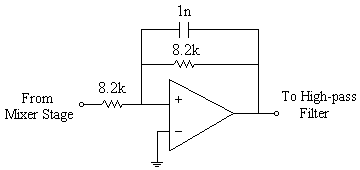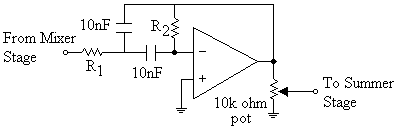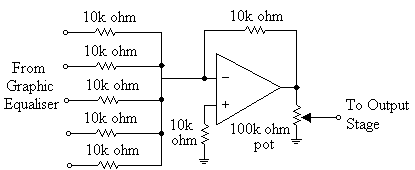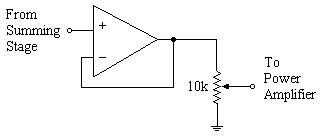|
|
| For the filter stage, there are mainly two classes
of filters available namely the passive and the active filters. In
general, passive filters utilises passive components such as resistors,
inductors and capacitors to filter out unwanted frequency components and
in general are used for high frequency applications. On the other
hand, active filters uses opamps together with passive components to produce
bandpass and band reject filters without using inductors. Active
filters also provide a power gain not available in passive filter
circuits.
For simplicity, we can use a first order low-pass filter design. The function of the low-pass filter is to let frequencies below cutoff frequency through and attenuate any frequency components greater than the cutoff frequency.
The figure gives a first order low-pass filter with unity gain and a
cutoff frequency of 20kHz.
|





 Back
to preamplifier development labs
Back
to preamplifier development labs